Cagliari shines under the sun at the centre of the Mediterranean, with its splendid white limestone palaces.
In this city is concentrated all the history of the Mediterranean sea: founded by the Phoenicians, dominated by the Romans and Carthaginians and finally at the center of disputes between Pisans and Spaniards, before ending up in the hands of the Piedmontese.
You'll fall in love with its ancient archaeological finds, a historic center with elegant buildings and narrow alleys in which you can get lost (or find yourself) and beautiful city beaches.
There is so much to discover here, from the flavours of Sardinian cuisine, where sea and land meet, to local traditions rooted in the island's deep past.
The following is the list with our suggestions to help you experience the city like a true local, to discover those little gems that make a visit special.
Here are the 7 things to do in Cagliari: discover the best viewpoints, the beach most loved by local citizens, traditional food and the pink flamingo show.

Experience Cagliari like a local: tips for an authentic trip
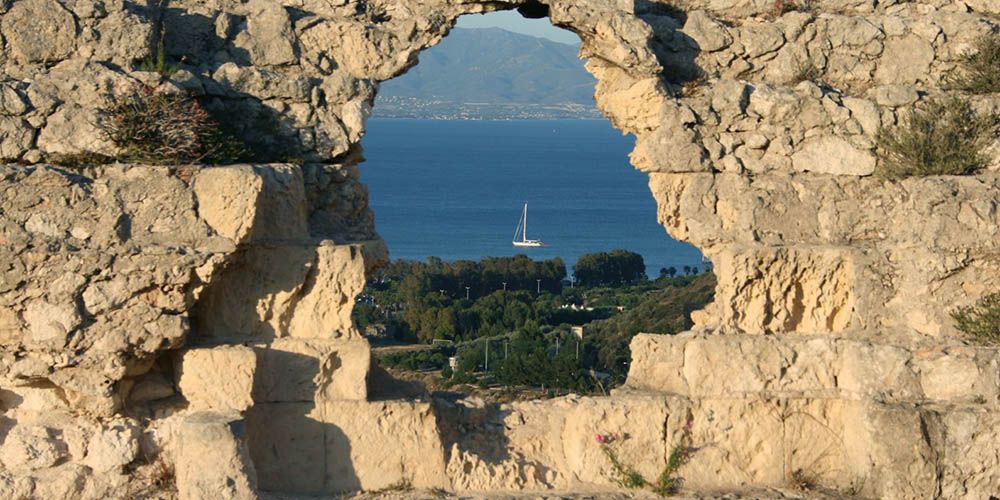
Cagliari is a city rich in charm, a journey through culture, history, culinary excellence, and relaxation on its splendid beaches lapped by a crystal-clear sea. Visiting Cagliari like a local means breaking away from the hit-and-run tourism mentality and immersing yourself in the daily rituals of its citizens, off the beaten track. If you're looking for non touristy things to do in Cagliari, this is the experience for you. Take note of these Cagliari local tips for an authentic adventure:
• Discovering the best panoramic points, from where you can observe the white city of Cagliari and capture its most private nuances;
• Being lucky enough to see a flock of pink flamingos take flight at sunset;
• Savoring its most authentic flavors at the largest covered market in Italy;
• Having the courage to climb the splendid Sella del Diavolo (Devil's Saddle) and discover the legend it preserves;
• Discovering typical seafood and meat dishes, not to mention Mirto, the local liqueur served at the end of a meal;
• Exploring the coast and diving into the crystal-clear waters of its beaches;
• Participating in the celebration of the patron saint: Sant'Efisio, one of Sardinia's most important saints;
• Immersing yourself in the greenery of the tranquil botanical garden, right in the city center;
• Visiting underground Cagliari, where secrets, history, and mystery blend in evocative settings;
• Getting away from Cagliari and discovering the Sound Garden and the museum town of San Sperate.
Come with us and let's begin this journey!
10. Discover the best panoramic spots
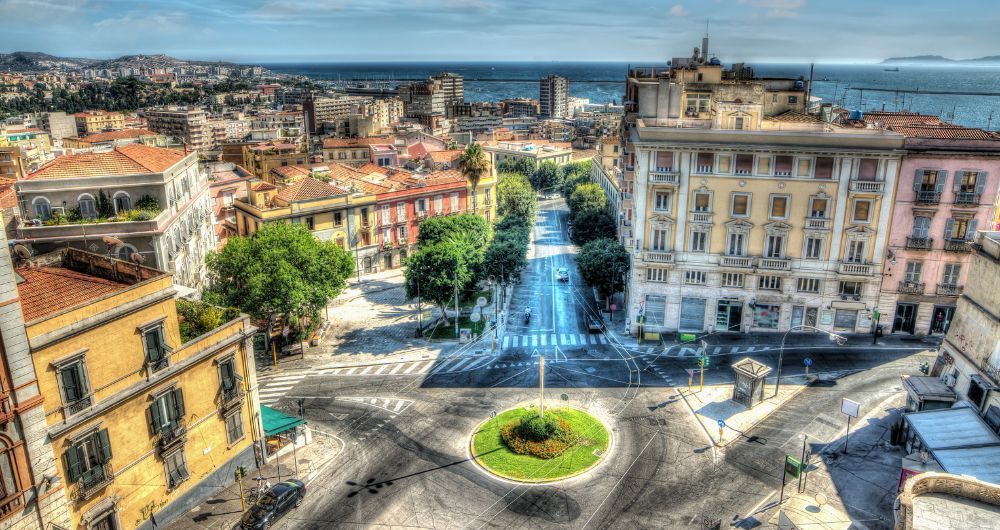
The view from the Bastion of Saint Remy.
Cagliari has many viewpoints that will make you fall in love with the city.
Almost all the terraces and viewpoints are in the Castello area, the beating heart of the city which was once protected by the walls.
Let's start from the iconic Bastion of Saint Remy, connecting the districts of Castello and Villanova. The Bastion is named after the first Viceroy of Sardinia, Filippo Guglielmo Pallavicino baron of Saint-Rémy, and features a marble staircase enclosed by a splendid triumphal arch.
The gem of this fort is the spectacular Umberto I terrace overlooking the city centre and offering glimpses of the so-called “Giardino sotto le mura” (literally “garden under the walls”): this palace is a must-see if you are in Cagliari!
The Bastion of Santa Croce is also located in the heart of the Castello area, a stone's throw from the Basilica of Santa Croce, in the middle of the old Jewish district. The panoramic view from the Bastion encompasses the whole of the western area of Cagliari, including the port. This panoramic point is perfect for enjoying the sunset as it also bars to visit at aperitif time.
Another panoramic point are the Pisan towers, symbols of Cagliari, built by the Sardinian architect Giovanni Capula around the 13th century by order of the consuls of Pisa.
The best preserved are the Torre dell'Elefante and the Torre di San Pancrazio, but you can only climb the first one.
The Torre dell'Elefante can in fact be visited with a guide and the entrance ticket costs €3. It has recently been renovated and therefore you can only go up to the fourth floor. We hope that the terrace will soon be opened to fully appreciate this ancient landmark.
9. Do shopping at the city market
Exploring the food market of San Benedetto is a journey into Sardinian gastronomy.
All Sardinian land and sea products are represented on its stalls: in Cagliari this place is simply known as "Il Mercato".
Don't miss the opportunity to taste and buy the delicious cured meats or the famous Sardinian cheeses (especially caciotta and pecorino, but above all the Fiore Sardo, with the option of vacuum-packing cheese pieces for tourists). Among the other products we recommend buying: honey, wines, traditional sweets and fresh pasta (including the gnocchetti).
It goes without saying that this market is the ideal place to buy seafood and fresh fish of all kinds, especially tuna and swordfish.
The San Benedetto market is the largest covered market in Italy, split on several floors, and is located right in the central San Benedetto district. If you want to do culinary shopping, we recommend that you visit it early in the morning to choose the best products.
Thanks to the lively atmosphere and the richness of the products on offer, this market has become a very popular tourist destination: a visit here is just perfect to get to know the people of Cagliari better and observe their shopping habits.
The Market is open between 7 in the morning and 2 pm.
8. Hike the Devil's Saddle
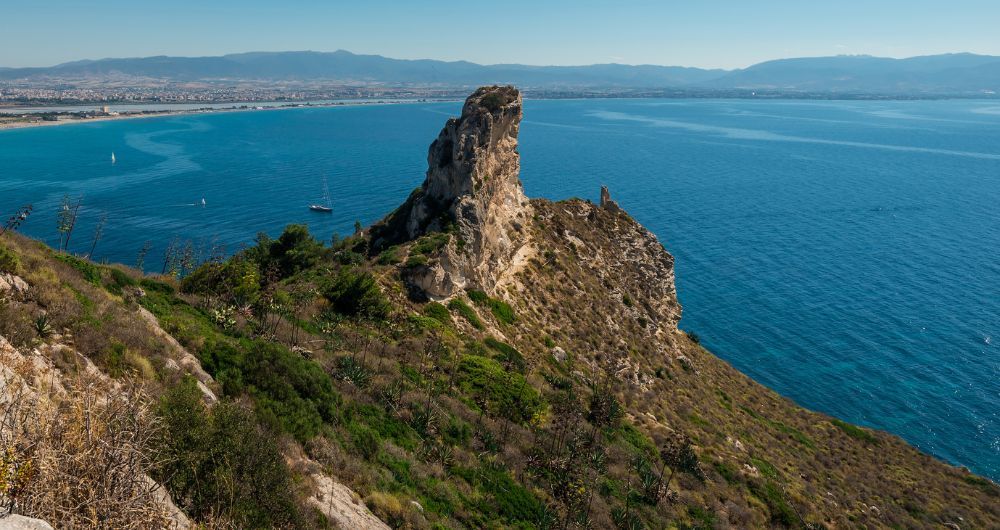
The evocative mountain profile of the Sella del Diavolo stands out on the south side of Cagliari.
This scenic promontory is easy to conquer and guarantees a few hours of peace while enjoying the scent of mastic trees and the view of the sea. We recommend you to visit it just before sunset for an unforgettable photo shoot and not to suffer too much from the heat.
Start your trek from Calamosche beach and take the path that climbs up to the top.
Now that you have left the chaos of the city behind you, you can deeply breathe in the subtle scent of the Mediterranean scrub and enjoy the peace and silence, broken only by the noise of the wind and the waves hitting the coast.
The summit of the Sella del Diavolo can be reached in about 1 hour and from there you can fill your eyes with a breathtaking landscape embracing the entire Golfo degli Angeli.
Furthermore, on top of this rocky outcrop you will also find ruins witnessing to Sardinia's past: a watchtower from the Spanish period and the ruins of a Punic temple with a cistern dedicated to Astarte.
The path is well marked with signs and the climb is not too strenuous, but we recommend bringing water and snacks.
The name of the promontory derives from an ancient legend: Lucifer and his army of demons wanted to take over this wonderful corner of Sardinia but lost the battle against God and the angels who made Lucifer fall to the ground. He then left the saddle imprint on the rocks of the coast.
7. Eat traditional food

A delicious portion of malloreddus with sausague ragu.
Sea and earth collide in Cagliari, bringing to life a vast and original gastronomy.
Look for a traditional taverna and get ready to embark on a culinary journey that has its roots in ancient times.
Before the actual meal, surrender yourself to the famous carasau bread, extra-thin and crunchy, working perfectly when combined with a tray of Pecorino cheese and local cured meats.
Right after pick the "is panadas" or "impanadas", small crescent-shaped cakes filled with all the delights that Sardinia can offer (different types of meat, potatoes, vegetables, broad beans).
The first courses that you cannot miss are the malloreddus, the typical Sardinian shell-shaped dumplings seasoned with sausage ragout, and the fregula, a dry durum wheat pasta similar to couscous and seasoned with clams (called “cocciula”).
Furthermore, we recommend you try any seafood dish on the menu, including the fish soup (called "sa cassola"), which contains all the flavours of the sea and is usually prepared with the catch of the day by mixing fresh fish and seafood.
Moving to the second course, the main specialty in Cagliari is the porceddu, an exquisite pork dish. The recipe involves a roasted Sardinian suckling pig, cooked to perfection on a spit after being abundantly seasoned and flavoured with various herbs, pepper and saffron.
Finally, if you love desserts, try the delicious sebada: disks of fried batter filled with sheep's cheese sweetened with yummy local honey.
To end the meal the Sardinian way, sip a glass of myrtle liqueur, a local favourite (also perfect to take home as a souvenir!).
Experience a half-day excursion to taste the delights of Cagliari6. Sunbathe at the local beach
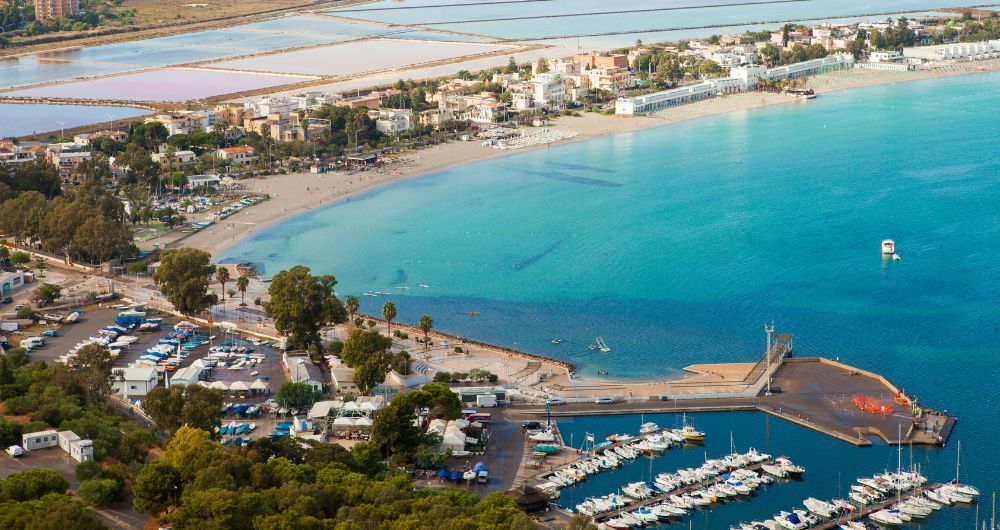
Aerial view of the Poetto beach.
Loved by locals and tourists alike, the crescent-shaped Poetto beach offers white sand bordered by blue sue, just a stone's throw from the city.
We are talking about one of the most beautiful "city beaches" in Europe, perfect for a day at the beach and an aperitivo at sunset time.
If you are in Cagliari and don't want to go too far to reach the wildest places in Sardinia, then this beach is perfect for you: almost 7 kilometres of uninterrupted sand and lots of space for sunbathing and swimming, as well as bars, kiosks for eating and shops.
The Poetto offers both private beach resorts and free spaces.
The beach is so close to the city center of Cagliari: you can get there in 15 minutes by car (with plenty of free and paid parking, but often crowded) or with the bus "PF" from the train station in Piazza Matteotti (in 40 minutes).
Finally, the Poetto beach is ideal if you love exploring the coast by kayak or if you are fond of kitesurf (there are several agencies that offer tours).
A day at the beach goes well with a walk on the scenic Sella del Diavolo, a little further south.
5. Join the main city festival
Every 1st May - and for four days - Cagliari comes alive for this ancient celebration where the local citizens parade in the streets in their traditional clothes, honouring the saint.
The festival, among the most spectacular religious rites in Sardinia, stems from an event happened in 1652, when the city asked for the intervention of St. Ephysius to put an end to the plague epidemic. The promise made to the saint is that he would be celebrated annually and forever. A few years later the epidemic came to an end and so from 1657 the first day of May was dedicated to the celebration of the saint.
During the four days of celebration, the streets are filled with locals wearing traditional Sardinian costumes, escorting the statue of St. Ephysius on foot or with ox-drawn carts.
The event attracts both local citizens and visitors from the rest of Sardinia.
The procession reaches the village of Nora some 35 km away, where the statue of the saint is left until the return to Cagliari on May 4th - with a night parade full of emotions. It all ends at the very central Church of Sant'Efisio on May 4th.
This folkloristic celebration is much more than a simple parade: the passion and intensity are high, it’s visually pleasing (imagine the scattering of thousands of rose petals on the road) and there are many collateral events dedicated to Sardinian music and, above all, to poetry.
We recommend you to visit Cagliari during these festive days to better understand its roots and learn about its ancient traditions: it is obviously advisable to book your accommodation well in advance.
4. Spot the pink flamingos
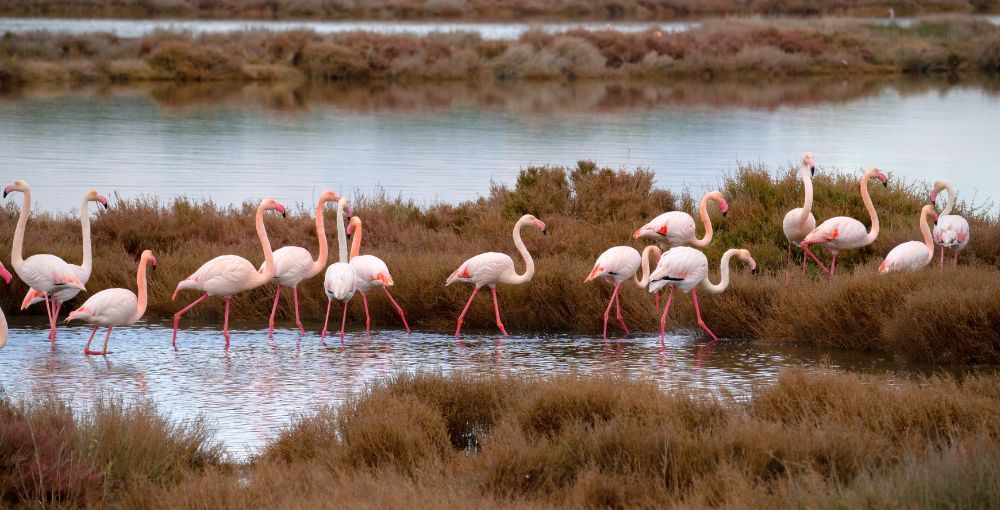
Pink flamingos just a few hundreds metres from Cagliari city centre.
In Cagliari you can take a rather special trip without going too far from the city: watch the pink flamingos in their natural environment.
Cagliari is in fact the preferred destination by flamingos to nest and look after their chicks in a protected environment.
The best time to see large masses of these animals is late spring, between May and June, when they lay their eggs. During the rest of the year they are still present, but in small groups.
Cagliari had always been just a mere stage in the migration path of birds towards the Camargue, in France, but since the 1990s the flamingos have decided to change their habits and have established their residence in two places in the city.
The first is the Molentargius-Saline Park, the other the Santa Gilla Lagoon.
The Molentargius-Saline Park is formed by a mix of fresh and salt water basins and is located in the south-east area of Cagliari. The "Stagno di Molentargius" (the "pond") is the best place to observe these pink birds: the chicks are left in a corner of the pond until they are ready to explore the surrounding area. The park can be reached in just over 10 minutes by car from the center of Cagliari and offers guided tours or the possibility of exploring it on your own on foot or by bicycle.
The Laguna di Santa Gilla is one of the largest wetlands in Europe, with a unique biodiversity, thanks to the variety of the territory (ponds, salt marshes, marshy areas and lagoon). It is very easy to come across large groups of flamingos and other bird species, which makes this lagoon a bird-watching paradise. The lagoon can be reached in a few minutes by car from the center of Cagliari or with buses 130 and 134.
If you love photography, we recommend a telephoto lens to capture the most intimate scenes of flamingo broods (also to avoid getting too close to these notoriously cautious birds).
(If you really like these fascinating birds, here are other places in Italy where you can spot them).
3. Lose yourself among the plants of the Cagliari Botanical Garden

An extraordinary place, a green oasis, home to thousands of plant species from around the world, some very rare, the Cagliari Botanical Garden is located in the heart of the city's historic center. It is among the most beautiful botanical parks in Italy and is considered one of the oldest in Europe.
Strolling among centuries-old trees, Mediterranean shrubs, tropical palms, and medicinal plants will be a unique experience. You can step into the shoes of a local botanist, observing, noting, and studying the various species.
The botanical garden covers approximately 5 hectares of greenery. It was inaugurated in 1866 under the guidance of Patrizio Gennari, a renowned scientist and botanist, and is now managed by the University of Cagliari.
Inside, you can also explore the archaeological area, which features the remains of several Roman houses and a thermal bath. The garden adjoins the Roman Amphitheater, dating back to the late 2nd century BC and in good condition. Funding was recently allocated for the restoration of this fascinating site, which in two years will reopen its doors not only to visitors but also to outdoor performances scheduled for the summer months.
2. Discover Underground Cagliari
Yes, even Cagliari hides a mysterious and ancient world deep within, rich in stories and secrets. Caves, tunnels, necropolises, hidden refuges. Underground Cagliari is a journey through history, an adventure for true travelers, far from the usual tourist destinations.
On the underground route, you'll find the Crypt of the Holy Sepulchre, in the Marina district, the most important discovery of Baroque funerary art in Sardinia. Also in the Marina district is the largest archaeological area in Sardinia, that of Sant'Eulalia.
One of the most interesting hypogea, closely linked to the history of Cagliari, about 9 meters underground, is the prison of Sant'Efisio, Sardinia's most venerated saint, to whom the great May Day celebration is dedicated. Finally, the crypt of Santa Restituita, which was also used as an air raid shelter during the World Wars. Descending into the belly of Cagliari is a different experience that we recommend you try.
1. The Museum-Town of San Sperate and its Sound Garden
Just a few kilometers from the city of Cagliari, a must-see destination: the Museum-Town of San Sperate and its Sound Garden. San Sperate is a town that, over the years, thanks to the contributions of Italian and international artists, has become an open-air museum. Over 400 murals and more than a hundred installations adorn the walls, streets, and squares of the town.
The idea was born in 1968 by local sculptor Pinuccio Sciola, who, with chisel and imagination, created the first installation: the Sound Garden. You will suddenly find yourself immersed in the scents of Sardinian nature, in a garden composed of megalithic stones, carved by the master. Guides will accompany you on a discovery of the different sounds evoked by the stones, and you will experience the thrill of hearing them speak; just touch them to hear their song. A timeless artistic space well worth the visit.
About the author
Written on 27/05/2023

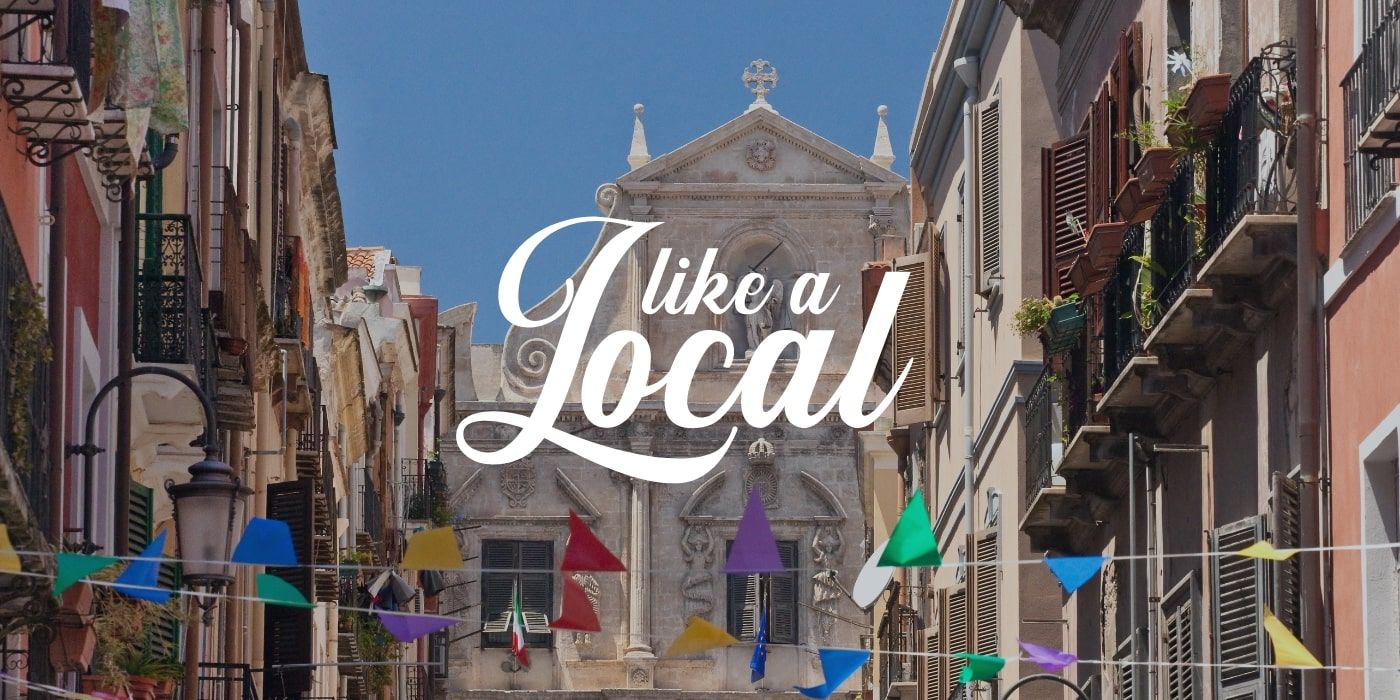

Fabrizio Mariani
Do you want to visit Cagliari like a local? Then check out 10 things to get the best out of the city.